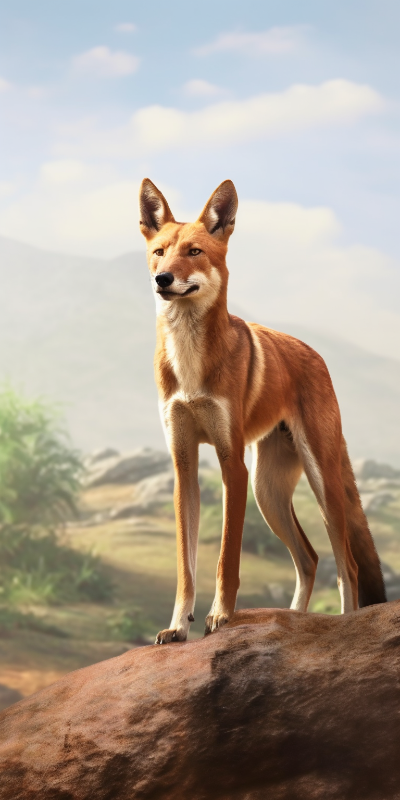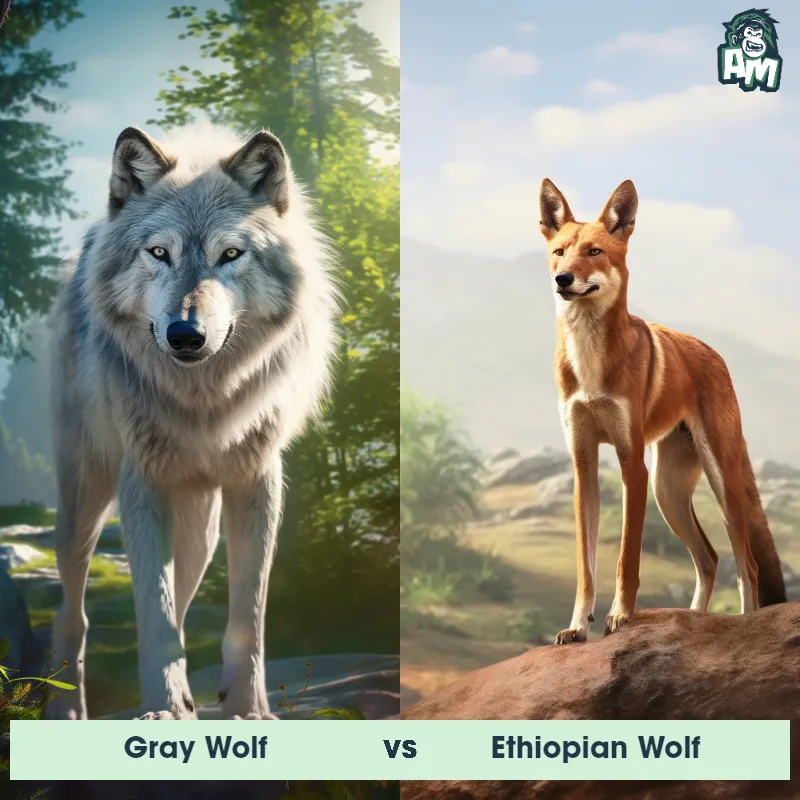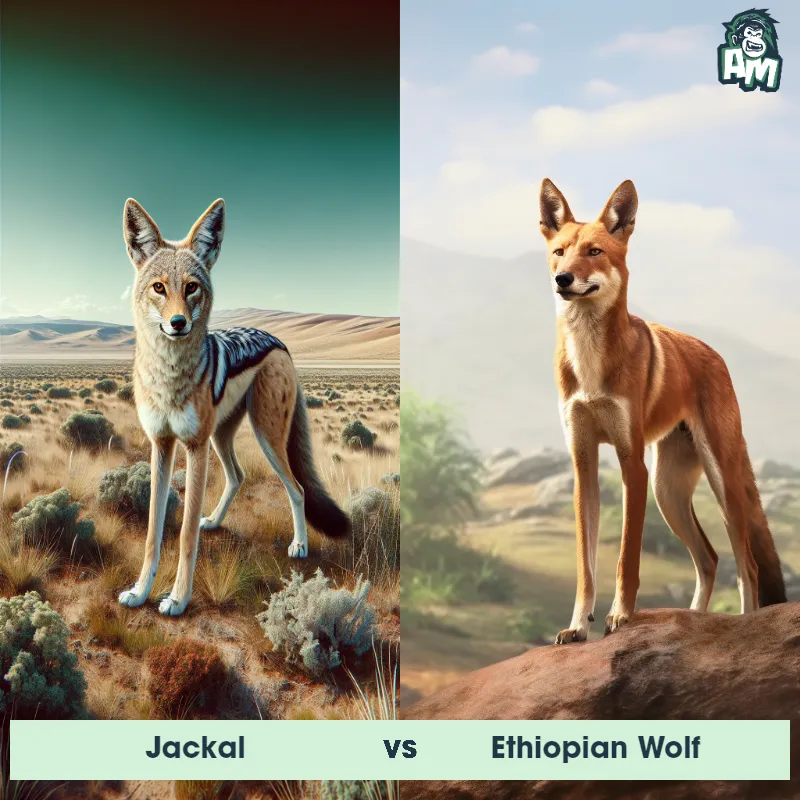The Ethiopian Wolf
The Ethiopian Wolf, also known as the Simien Fox or the Abyssinian Wolf, is a unique and endangered species found only in the Ethiopian Highlands. This canid species is characterized by its slender body, long legs, and bushy tail. It has a reddish-brown to tan coat, with white patches on its throat and chest, and a black muzzle and ears. Ethiopian Wolves are social animals that live in family groups, with an alpha male and female leading the pack. They primarily hunt rodents, as their long muzzles and slender bodies allow them to hunt in burrows. With around 440 individuals left in the wild, the Ethiopian Wolf is one of the rarest carnivores in the world.

| Ethiopian Wolf | |
|---|---|
| Size | 20-24 inches (50-60 cm) at the shoulder |
| Weight | 24-40 pounds (11-18 kg) |
| Speed | Speed: 37 mph (60 km/hr) |
| Key Strength | Speed and agility |
| Biggest Weakness | Lack of physical strength |
| Scientific Name | Canis simensis |
| Family | Canidae |
| Habitat | Alpine grasslands and heathlands |
| Geography | Ethiopian Highlands |
| Diet | Primarily rodents and small mammals |
| Lifespan | 6 years - 8 years |

The Ethiopian Wolf
The Ethiopian Wolf, also known as the Simien Fox or the Abyssinian Wolf, is a unique and endangered species found only in the Ethiopian Highlands. This canid species is characterized by its slender body, long legs, and bushy tail. It has a reddish-brown to tan coat, with white patches on its throat and chest, and a black muzzle and ears. Ethiopian Wolves are social animals that live in family groups, with an alpha male and female leading the pack. They primarily hunt rodents, as their long muzzles and slender bodies allow them to hunt in burrows. With around 440 individuals left in the wild, the Ethiopian Wolf is one of the rarest carnivores in the world.
Fun Fact: The Ethiopian Wolf is the rarest canid species in the world, and it is only found in the isolated Ethiopian Highlands, making it a truly endemic animal.
| Ethiopian Wolf | |
|---|---|
| Size | 20-24 inches (50-60 cm) at the shoulder |
| Weight | 24-40 pounds (11-18 kg) |
| Speed | Speed: 37 mph (60 km/hr) |
| Key Strength | Speed and agility |
| Biggest Weakness | Lack of physical strength |
| Scientific Name | Canis simensis |
| Family | Canidae |
| Habitat | Alpine grasslands and heathlands |
| Geography | Ethiopian Highlands |
| Diet | Primarily rodents and small mammals |
| Lifespan | 6 years - 8 years |
Ethiopian Wolf Matchups
We use AI to simulate matchups between the Ethiopian Wolf and other animals. Our simulation considers size, strength, and natural predatory behaviors to determine the most likely outcome.

Can't find the Matchup you want?
Create Your Own MatchupEthiopian Wolf: Diet, Predators, Aggression, and Defensive Behaviors
What do Ethiopian Wolves eat?
Ethiopian Wolves primarily feed on small mammals like rodents (such as rats and mice) and occasionally birds. They are skilled hunters and use their keen sense of sight and hearing to locate their prey in the grasslands and moorlands of the Ethiopian highlands.
Do Ethiopian Wolves have any predators?
Ethiopian Wolves do have predators, including golden eagles and hyenas. However, the biggest threat to their population is human activities such as habitat destruction, hunting, and disease transmission from domestic dogs.
Are Ethiopian Wolves aggressive?
Ethiopian Wolves are not typically aggressive towards humans or other animals unless they feel threatened or cornered. They are known to be social animals and live in family groups, where they demonstrate cooperative hunting behaviors.
Do Ethiopian Wolves fight amongst themselves?
Ethiopian Wolves may engage in fighting within their packs, especially during mating season or when establishing the hierarchy within the group. These fights are usually brief and rarely result in serious injuries as they use vocalizations and body language to communicate dominance.
How do Ethiopian Wolves defend themselves?
When threatened, Ethiopian Wolves may display defensive behaviors such as growling, baring their teeth, or standing tall to appear larger. They may also retreat or run away from predators, relying on their speed and agility to evade capture.
What is the Ethiopian Wolf's biggest weakness in a fight?
The Ethiopian Wolf's biggest weakness in a fight is its relatively small size and fragile build compared to larger predators like hyenas or eagles. While they are agile and quick, they may struggle against larger, stronger opponents in physical confrontations. Additionally, their small population size and limited geographic range make them particularly vulnerable to extinction threats.
Fun Fact: Ethiopian Wolves have unique hunting techniques, where they rely on cooperative hunting strategies and use precise digging skills to catch their small rodent prey.
Fun Fact: Despite their name, Ethiopian Wolves are not true wolves. They are actually more closely related to foxes, and their scientific name, Canis simensis, reflects this fox-like lineage.












